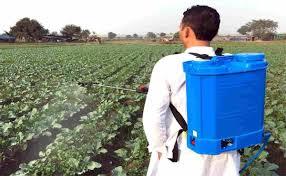Agricultural Sprayers Market: Emerging Trends in Precision Farming

The Agricultural Sprayers Market is at the forefront of a digital revolution in agriculture, driven by the rapid rise of precision farming. With increasing global demand for food, resource conservation, and environmental stewardship, agricultural spraying technologies are evolving to become more efficient, intelligent, and environmentally responsible. This evolution is not just a technological upgrade—it’s a fundamental shift in how farming is conducted, ensuring optimal yield while minimizing waste and environmental impact.
Precision Agriculture and the Role of Spraying Systems
Precision farming is based on using data-driven insights and automated technologies to improve farming accuracy and efficiency. In this context, the Agricultural Sprayers Market has witnessed remarkable innovations in both equipment and software. Advanced sprayers are now capable of site-specific application, adjusting chemical quantities based on crop and soil variability.
These modern systems use GPS-based guidance to ensure precise spraying patterns, eliminating overlaps and missed areas. In addition, Variable Rate Technology (VRT) enables sprayers to automatically adjust pesticide or fertilizer doses in real-time. This not only reduces input costs but also minimizes environmental risks by avoiding over-application.
Integration with Remote Sensing tools such as drones and satellites further enhances precision. These tools capture detailed imagery of fields, identifying stress areas, pest infestation zones, and nutrient deficiencies. The data is then transmitted to sprayers that can act precisely on these zones, improving overall field health and crop productivity.
Automation and Artificial Intelligence in Action
One of the most transformative trends in the Agricultural Sprayers Market is the incorporation of Artificial Intelligence (AI) and machine learning into spraying operations. These technologies allow sprayers to detect and distinguish between crops, weeds, and empty patches in real time using computer vision.
Such smart systems perform targeted spraying, applying chemicals only where necessary, thus reducing chemical usage by as much as 90%. This selective approach not only protects the environment but also slows the development of pesticide resistance in pests.
Moreover, automated sprayers are becoming more prevalent, especially in large-scale farming. Autonomous ground vehicles and drones equipped with sprayers are capable of navigating fields with minimal human intervention. This trend is proving especially beneficial in regions facing labor shortages and during critical periods when quick intervention is needed.
Connectivity also plays a major role in these advancements. IoT-enabled sprayers can continuously collect field data, monitor application metrics, and alert farmers to anomalies or maintenance issues. Cloud-based platforms allow users to manage spraying schedules, assess performance, and make strategic decisions based on comprehensive field analytics.
Sustainability and Environmental Impact
Environmental sustainability is becoming a core focus in agriculture, and the Agricultural Sprayers Market is responding with innovative solutions. Many sprayer manufacturers are prioritizing low-drift nozzles, electrostatic sprayers, and closed transfer systems that ensure chemicals are applied accurately and safely.
Additionally, solar-powered and battery-operated sprayers are gaining popularity among smallholders and environmentally conscious growers. These models are not only energy-efficient but also reduce greenhouse gas emissions associated with fuel-powered machines.
Biological pesticides and organic inputs are also being accommodated in new sprayer designs. As organic farming expands, sprayers are being developed to meet the unique requirements of these inputs, ensuring gentle application and residue control.
Challenges to Adoption
Despite these promising trends, several challenges remain in the path of widespread adoption. High initial costs of advanced spraying systems can deter small-scale farmers. However, government subsidies, cooperative ownership models, and rental schemes are helping bridge this gap.
Another challenge is the need for technical skills. Operating AI-based or GPS-guided sprayers requires training, and lack of knowledge can hinder effective usage. To address this, many companies are investing in training programs and user-friendly interfaces to encourage adoption.
Moreover, connectivity limitations in rural areas can restrict access to real-time data and cloud services. Continued investment in rural internet infrastructure is essential to unlock the full potential of precision spraying.
Conclusion
The Agricultural Sprayers Market is undergoing a paradigm shift with the adoption of precision farming technologies. From real-time data integration to AI-driven targeting and sustainable energy use, sprayers are evolving into intelligent, efficient tools that align with the future of agriculture. As the world grapples with climate challenges, food security concerns, and labor constraints, precision spraying solutions offer a compelling path forward—one that enhances productivity while preserving our planet's vital resources.
- Art
- Causes
- Crafts
- Dance
- Drinks
- Film
- Fitness
- Food
- Games
- Gardening
- Health
- Home
- Literature
- Music
- Networking
- Other
- Party
- Religion
- Shopping
- Sports
- Theater
- Wellness


